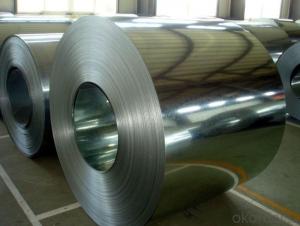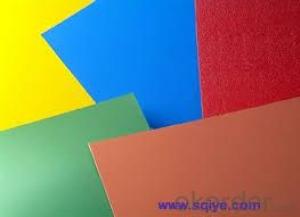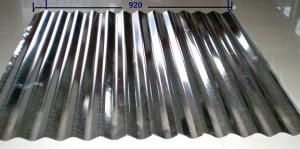color bond surface coating steel plate--XY008
- Loading Port:
- China Main Port
- Payment Terms:
- TT OR LC
- Min Order Qty:
- -
- Supply Capability:
- -
OKorder Service Pledge
OKorder Financial Service
You Might Also Like
Color bond surface coating steel plate :
more than ten years experiences, the products are sold to the domestic city and some international cities we strivc to develop production of color coating steel plate the plating (aluminum )zinc steel. Coil cheickness between 0.6mm and 1.5mm and the width from 600mm to 1250mm and a variety of high durability of color coating steel plate.
the company has multiple layer patterns for customers to choose The company provides products deep processing services ,meet the various needs of customers on board specifications All of out products comply with international quality standards and are greatly appreciated in a variety of different markets throughout the world if you ate interested in any of our products or would like to discuss a custom order please feel free to contact us we are looking forward to forming successful business relationships with new clients around the world in the near future.
We can design the color and thickness according to customers' requirements. The delivery time is only 30 day after you confirm the order.
- Q: How is the quality of steel sheets determined?
- The quality of steel sheets is determined by various factors such as the composition of the steel, its mechanical properties, surface finish, and dimensional accuracy. It undergoes rigorous testing for strength, ductility, hardness, and resistance to corrosion. Additionally, the manufacturing process, including the selection of raw materials and adherence to industry standards, plays a significant role in determining the quality of steel sheets.
- Q: Are steel sheets suitable for building envelopes or curtain walls?
- Yes, steel sheets are suitable for building envelopes or curtain walls. Steel offers excellent strength and durability, making it a reliable choice for construction projects. It can withstand harsh weather conditions and provide a secure barrier against external elements. Additionally, steel sheets can be easily manipulated to create various architectural designs, allowing for flexibility and creativity in building envelope and curtain wall designs.
- Q: Can steel sheets be used for manufacturing machinery parts?
- Yes, steel sheets can be used for manufacturing machinery parts. Steel is a versatile and durable material that offers excellent strength and rigidity, making it suitable for producing various machinery components. Steel sheets can be easily formed, cut, and welded to create complex shapes and structures required for machinery parts. Additionally, steel has good corrosion resistance, ensuring the longevity of the machinery components. Steel sheets also provide dimensional stability and can withstand heavy loads and high temperatures, making them an ideal choice for manufacturing machinery parts.
- Q: Can steel sheets be used for electrical grounding purposes?
- Yes, steel sheets can be used for electrical grounding purposes. Steel is a good conductor of electricity, which makes it suitable for grounding applications. When properly connected to an electrical system, steel sheets can provide an effective path for the dissipation of electrical charges and prevention of electrical shock hazards. However, it is important to ensure that the steel sheets are adequately bonded and connected to the grounding system in order to create a low-resistance path for fault currents. Additionally, factors such as the thickness and surface area of the steel sheets should be considered to ensure they meet the requirements for effective grounding.
- Q: What does "steel plate 10t" mean in the specification column of engineering material?
- 10T refers to the steel plate thickness of 10mm.Steel plate is made of molten steel, cooled and compressed into flat steel.The steel plate is flat, rectangular, and can be rolled directly or cut from a wide strip of steel.
- Q: What is the difference between a satin and mirror finish steel sheet?
- The appearance and level of reflectivity distinguish a satin finish steel sheet from a mirror finish steel sheet. A satin finish steel sheet displays a sleek, non-glossy appearance with a minimal level of reflectivity. Achieved through the use of abrasive materials, it creates a brushed or textured surface. This finish is often favored for its contemporary and subtle aesthetic. Satin finish steel sheets find common usage in architectural and interior design applications, such as kitchen appliances, countertops, and wall panels. On the contrary, a mirror finish steel sheet exhibits an immensely reflective surface that closely resembles a mirror. Achieved by polishing the steel sheet to a high gloss using fine abrasives and buffing compounds, this finish boasts an intense shine and exceptional clarity. It reflects light remarkably, resulting in a glamorous and opulent appearance. Mirror finish steel sheets are commonly employed in decorative applications, including automotive trim, jewelry, and ornamental architectural elements. To summarize, the primary distinction between a satin and mirror finish steel sheet resides in their appearance and level of reflectivity. Satin finish offers a smooth, matte appearance with minimal reflectivity, while mirror finish provides an incredibly reflective, mirror-like surface.
- Q: What is the corrosion resistance of steel sheets?
- The corrosion resistance of steel sheets varies depending on the type of steel, its composition, and the environmental conditions it is exposed to. Generally, stainless steel sheets offer excellent corrosion resistance due to the presence of chromium, which forms a protective oxide layer on the surface. However, other types of steel sheets may be susceptible to corrosion if not properly treated or coated.
- Q: What is the weight of a standard steel sheet?
- The weight of a standard steel sheet can vary depending on its dimensions and thickness. However, a commonly used gauge is 20, which has a weight of approximately 9.81 pounds per square foot.
- Q: What is the difference between a smooth and corrugated stainless steel sheet?
- A smooth stainless steel sheet has a flat and polished surface, while a corrugated stainless steel sheet has a wavy pattern or ridges on its surface. The corrugations provide added strength and rigidity to the sheet, making it suitable for applications where increased durability and resistance to bending or warping are required. The smooth sheet, on the other hand, is often chosen for its aesthetic appeal and can be easily cleaned and maintained.
- Q: Are the steel sheets suitable for HVAC applications?
- Indeed, HVAC applications find steel sheets to be highly suitable. Steel, being a robust and enduring material, possesses the ability to endure elevated temperatures and mechanical strain, thereby making it an ideal choice for incorporation in heating, ventilation, and air conditioning systems. Commonly, steel sheets are utilized in the construction of various HVAC components like ducts, plenums, and air handling units. They provide exceptional resistance against corrosion, which is of utmost importance in order to preserve the quality and durability of HVAC systems. Moreover, steel sheets can be effortlessly molded and joined through welding, allowing for customization and efficient installation. In summary, the utilization of steel sheets in HVAC applications guarantees dependable performance and longevity of the entire system.
Send your message to us
color bond surface coating steel plate--XY008
- Loading Port:
- China Main Port
- Payment Terms:
- TT OR LC
- Min Order Qty:
- -
- Supply Capability:
- -
OKorder Service Pledge
OKorder Financial Service
Similar products
Hot products
Hot Searches
Related keywords
























